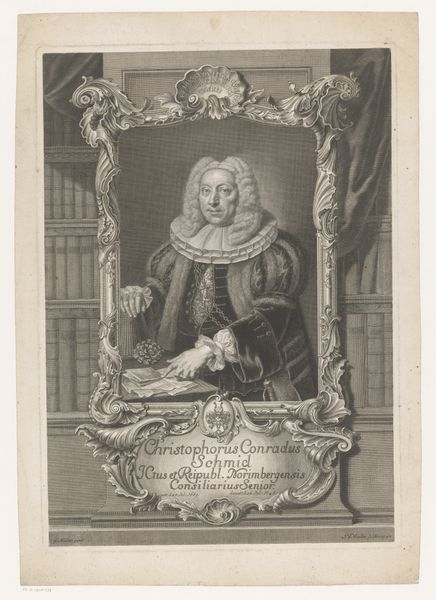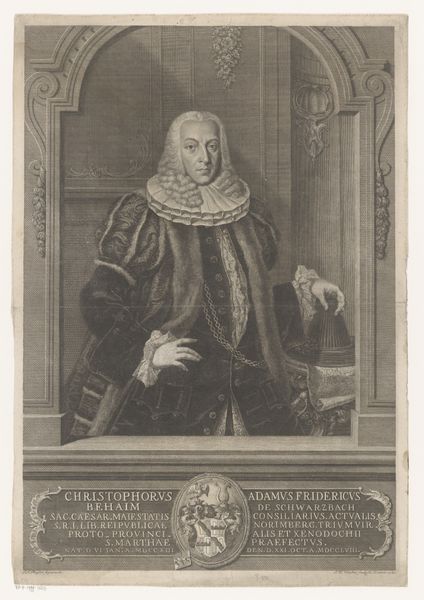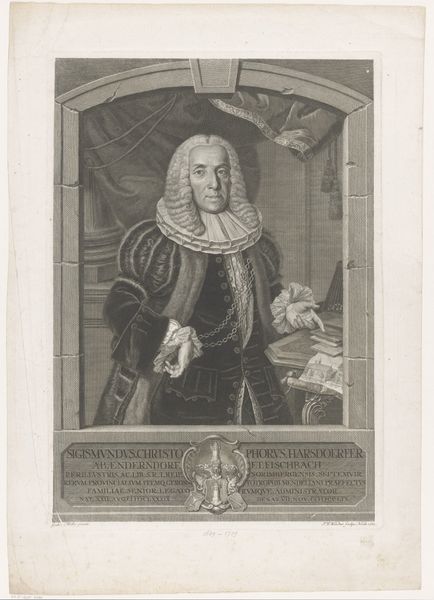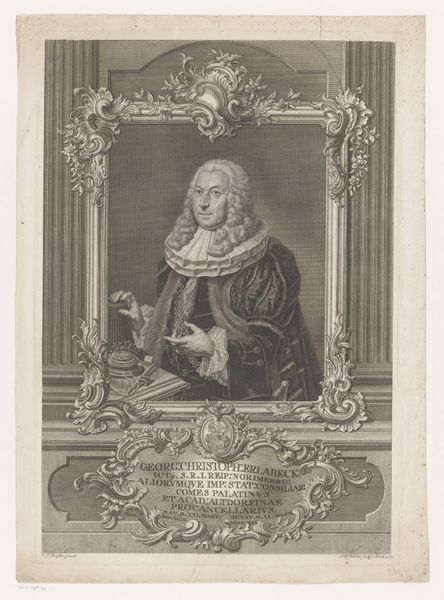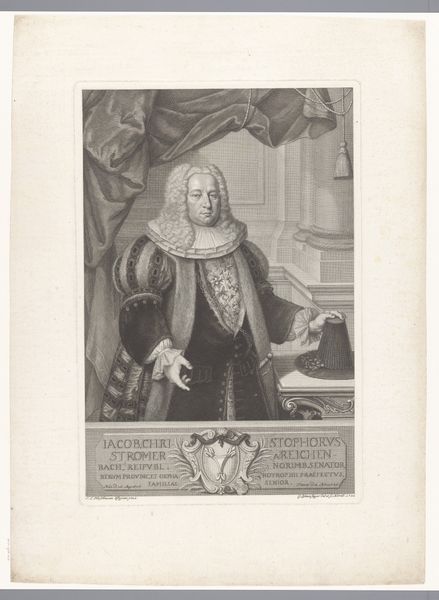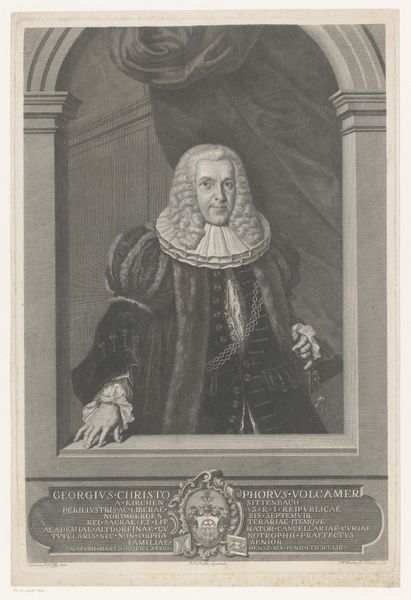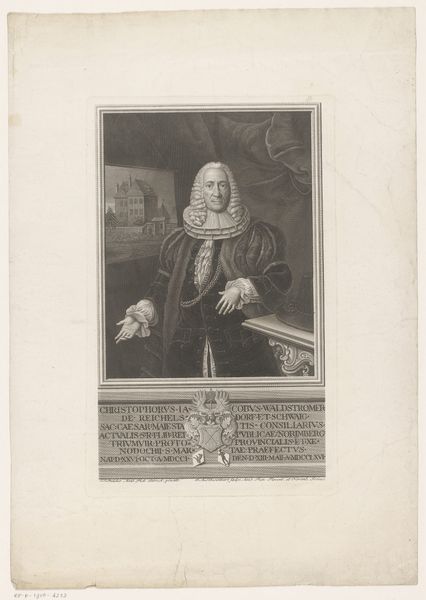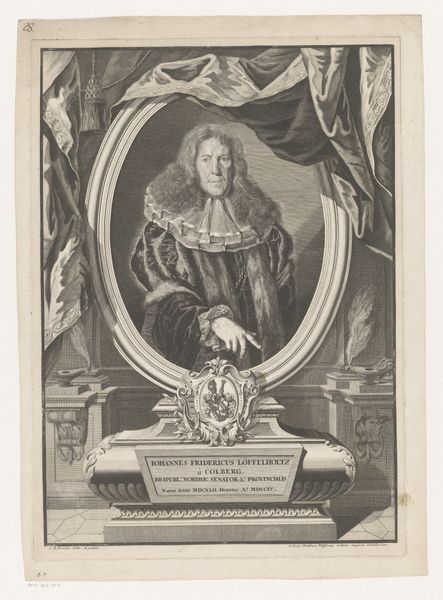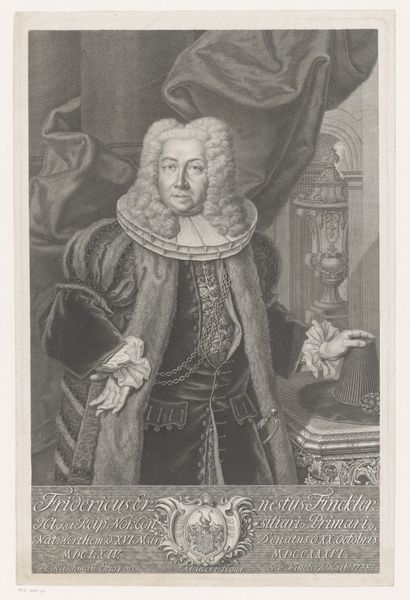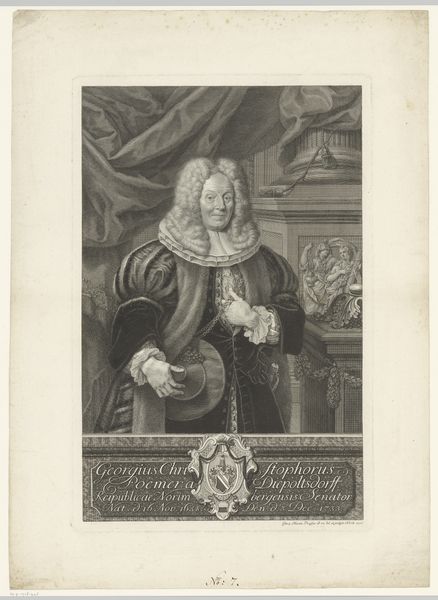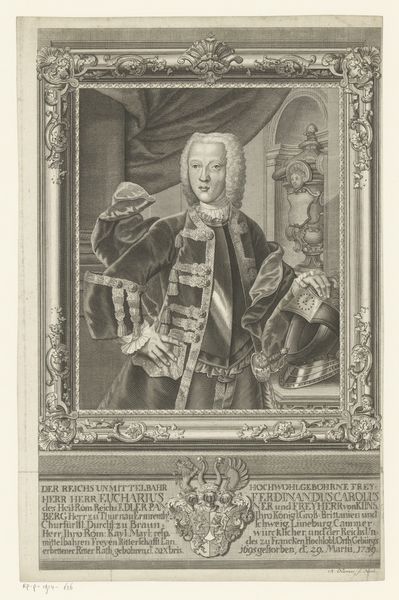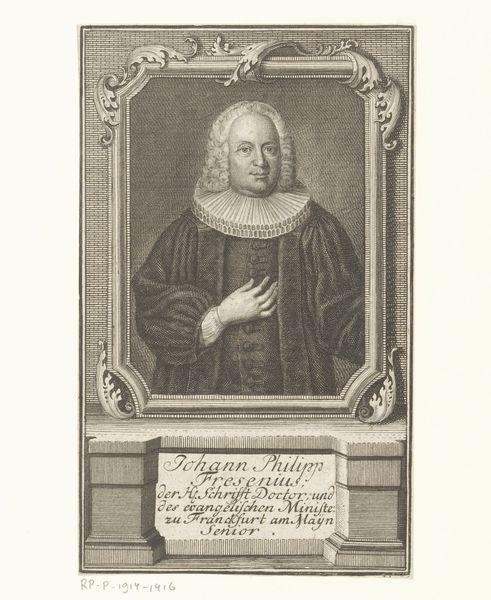
print, engraving
#
baroque
# print
#
history-painting
#
engraving
Dimensions: height 460 mm, width 295 mm
Copyright: Rijks Museum: Open Domain
Editor: This is "Portret van Christoph Willibald Harsdörfer," an engraving from 1760, currently held at the Rijksmuseum. The ornate frame almost overshadows the subject himself. The intricate detailing feels very Baroque. What elements of this print stand out to you, viewed strictly as an artwork? Curator: Focusing on the formal aspects, the contrasting textures are particularly striking. The smooth, almost porcelain-like rendering of Harsdörfer's face is juxtaposed against the rougher, more patterned texture of his fur-lined robe and the crisp lace collar. The artist manipulates light and shadow expertly to define volume, most noticeably in the drapery behind him and the decorative frame. Editor: The frame within the frame is something else! Is it common to find so much ornamentation? Curator: Indeed, observe the curvilinear forms of the frame—its visual density draws the eye, perhaps too aggressively. The success of this work rests on the tension it creates between ornamentation and the more subdued realism of the portrait itself. Consider the compositional balance, the inscription below serving as a stabilizing force. Does it enhance or detract? Editor: I see what you mean. Without the inscription, the elaborate frame might overwhelm the figure. It is the sharp-edged, classical balance, in contrast to the otherwise unfettered Baroque style. So, the combination of detailed texture and contrasting forms are what make this engraving unique? Curator: Precisely. Through the manipulation of line, tone, and form, the artist has created a visually compelling work, irrespective of its subject. Editor: Thanks. It's been great to dive deeper into the print. I can see more clearly how those elements interact now!
Comments
No comments
Be the first to comment and join the conversation on the ultimate creative platform.
